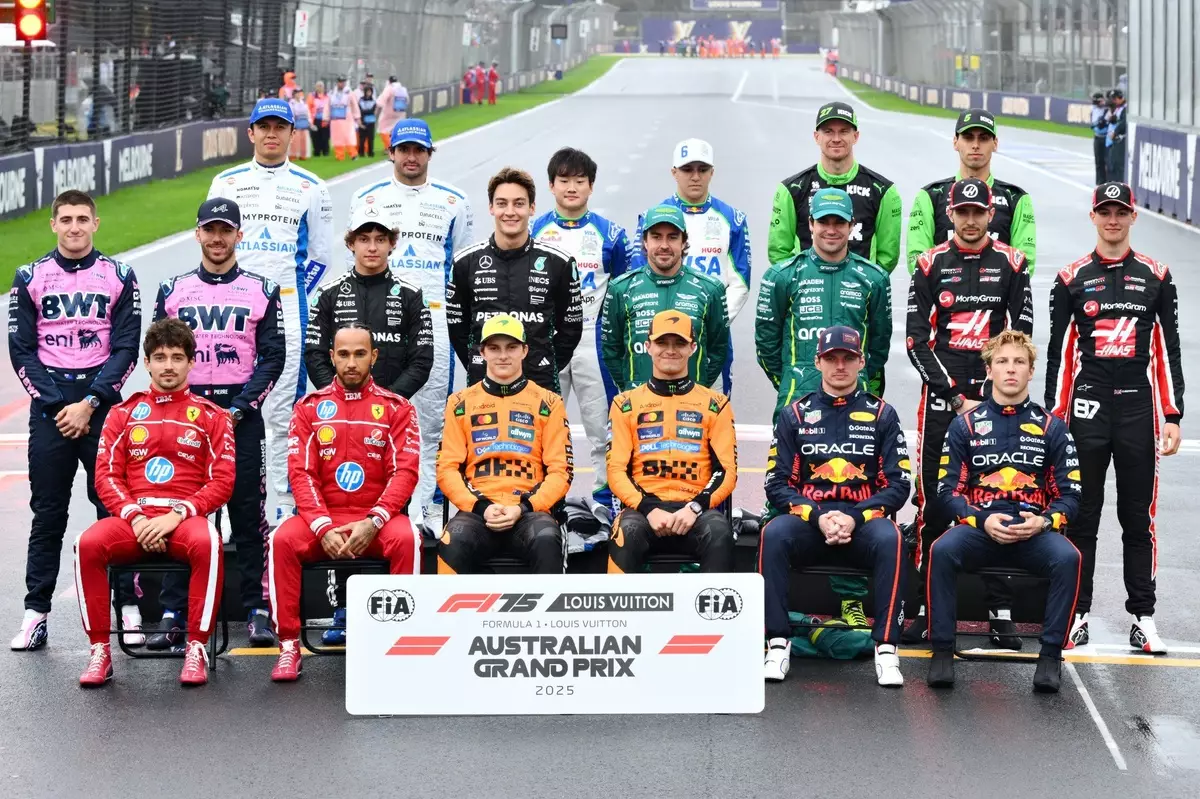As the current F1 season unfolds with dramatic flair, the sport gears up for its perennial ‘silly season’—a period where driver movements, contract negotiations, and team shakeups dominate paddock conversations. What makes the upcoming 2026 grid particularly compelling is not just the usual speculation but the nuanced interplay of contractual clauses, team dynamics, evolving regulations, and emerging talent. This confluence could significantly redefine the landscape of Formula 1, shaking up longstanding hierarchies and forging new rivalries.
At the heart of the controversy stands Max Verstappen, the reigning world champion whose future is shrouded in intrigue. Despite his contract with Red Bull extending to 2028, whispers in the paddock suggest that Verstappen’s deal likely contains performance-based break clauses. These clauses, which are not uncommon at the elite level, could be triggered if certain criteria are unmet—performance thresholds, team stability concerns, or strategic disagreements. Given his stellar performance in 2026, it remains to be seen whether Verstappen has fulfilled these contractual conditions or if he could leverage any dissatisfaction to explore options elsewhere. The upcoming months will be critical; Verstappen’s decision could be the most influential factor determining the entire grid configuration.
From the team side, Red Bull’s internal stability appears fragile. The recent departure of Christian Horner as team principal introduces a new layer of uncertainty. Without its long-standing leader, Red Bull might pivot in future strategic directions, impacting Verstappen’s outlook. Compounding the issue is the untested nature of Red Bull Powertrains’ new F1 engine program, backed by Ford, which aims to push the team forward in 2026. Reliability and performance of this new power unit will undoubtedly influence Verstappen’s satisfaction and, by extension, his decision to stay or seek greener pastures. Additionally, the driver lineup for the second seat remains in flux: Yuki Tsunoda is off-contract and unlikely to secure a renewal, while Isek Hadjar has impressed in the sister Racing Bulls team, raising the possibility that he could earn promotion—adding yet another variable to the team’s future composition.
Meanwhile, Mercedes looms as a perennial contender for Verstappen’s signature, thanks partly to Toto Wolff’s outspoken admiration for the Dutch phenom. Should Verstappen decide to move—whether seeking a fresh challenge or driven by team instability—Mercedes might be the logical destination, especially given Wolff’s previous public praise. The potential to team up with Lewis Hamilton or integrate into a renewed Mercedes lineup would make such a move highly compelling. Notably, Mercedes’ second seat remains open, with young driver Andrea Kimi Antonelli’s contract ending this season. Despite his promising talent, his recent struggles could prompt Mercedes to seek more seasoned stability or even look for other emerging talents.
The fate of George Russell also hangs in the balance, with his contract expiring at the end of 2026. The Briton has shown flashes of brilliance but is still searching for that consistency needed at the top level. His rivalry with Verstappen is well-remembered and, more recently, a potential move for Russell to other teams—such as Aston Martin, which will debut a cutting-edge Adrian Newey-designed car in 2026—has gained traction. His decision could be influenced heavily by Verstappen’s movements: if Verstappen leaves Red Bull, Russell might see the opportunity to step into a more competitive, stable environment. Conversely, if Verstappen stays put, Russell’s options may diminish, or he could consider alternative pathways, including chances at Ferrari or even contemplating a Formula 2-oriented strategy if it grants him a more prominent seat in subsequent seasons.
New challengers and fresh entrants will further complicate this puzzle. The arrival of Cadillac as the sport’s newest team in 2026 introduces exciting potential but also tremendous uncertainty. Unlike established manufacturers, Cadillac’s deep pockets could attract top talent, potentially luring drivers like Sergio Pérez, whose future remains somewhat uncertain, or Valtteri Bottas, currently Mercedes’ third driver. The possibility of placing experienced, proven contenders in the new team adds a layer of strategic intrigue—an entirely different dynamic from the usual player-driven negotiations among existing teams. The presence of rising stars like Mick Schumacher, Zhou Guanyu, and American talent Jak Crawford only enhances the category’s evolving depth, but their chances of securing a top cockpit will hinge on broader contractual negotiations and team ambitions.
The landscape of driver movement heading into 2026 is not merely about individual ambitions but about broader strategic calculations. Manufacturers and teams are no longer solely focused on performance but are increasingly weighing long-term stability, technical partnerships, and market considerations—particularly with electrification and innovative engineering pushing the sport into new territories. The ripple effects of these decisions will dictate whether 2026 becomes a season of new dynasties or a thrilling continuation of established rivalries.
In this high-stakes game of contractual chess, the next few years will reveal whether F1’s star drivers will remain tethered to their current teams or make bold gambles to chase glory elsewhere. What is guaranteed is that the grid of 2026 will be a landscape shaped by the relentless pursuit of excellence, strategic cunning, and a willingness to bet everything on the next big opportunity.

